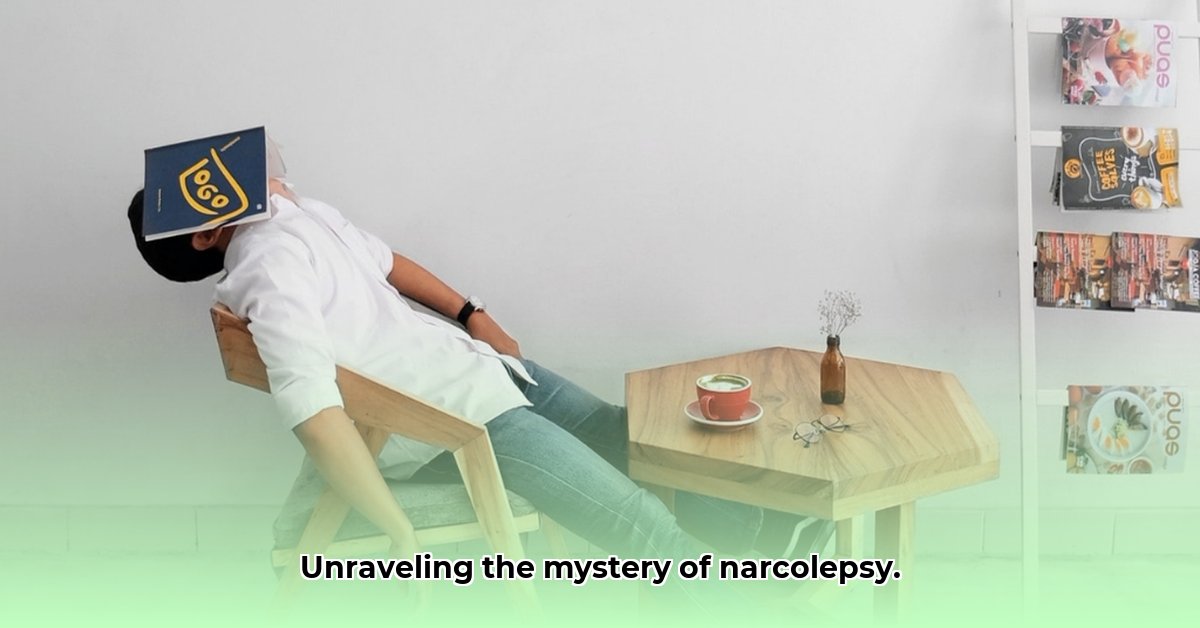
What is Narcolepsy?
Narcolepsy is a chronic neurological disorder that disrupts your brain's ability to regulate sleep and wakefulness. It's not just feeling tired; it's an overwhelming urge to sleep, often at inappropriate times. Imagine falling asleep mid-conversation or while driving – that's the reality for many people with narcolepsy. While it's a lifelong condition, effective management strategies can significantly improve quality of life.
The Telltale Signs of Narcolepsy: Recognising the Symptoms
Several key symptoms indicate narcolepsy. The most common is excessive daytime sleepiness (EDS) – an irresistible urge to nap, regardless of how much sleep you got the night before.
Another symptom is cataplexy, a sudden muscle weakness or paralysis, often triggered by strong emotions like laughter or anger. This can range from a slight facial droop to a complete collapse.
Sleep paralysis – the unsettling inability to move your body while waking or falling asleep – is another common symptom.
Finally, hypnagogic hallucinations – vivid, dream-like experiences as you fall asleep – can also occur. These feel incredibly real and can be disorienting.
Unpacking the Two Types of Narcolepsy: Type 1 and Type 2
Narcolepsy is classified into two types:
- Type 1 Narcolepsy: Generally more severe, characterized by cataplexy, EDS, sleep paralysis, and hypnagogic hallucinations. This type is linked to low levels of hypocretin (orexin), a brain chemical crucial for wakefulness.
- Type 2 Narcolepsy: Primarily involves EDS, without cataplexy. While both types impact daily life, their underlying causes and treatments differ slightly.
Isn't it fascinating how such different symptoms can stem from a disruption in the same underlying sleep-wake mechanism?
What Causes Narcolepsy? Unraveling the Mysteries
The exact cause remains unclear, likely involving a complex interplay of factors:
- Genetics: A family history increases your risk, suggesting a genetic predisposition.
- Autoimmune Reactions: The immune system might mistakenly attack hypocretin-producing brain cells.
- Environmental Factors: Viral infections may trigger narcolepsy in genetically susceptible individuals.
More research is needed to fully understand this intricate interplay.
Diagnosing Narcolepsy: The Path to Understanding
Diagnosis involves a visit to a sleep specialist. They'll conduct a thorough medical history review, physical examination, and likely order:
- Polysomnography (sleep study): Monitors brainwaves, heart rate, and breathing during sleep.
- Multiple Sleep Latency Test (MSLT): Measures how quickly you fall asleep during short daytime naps.
Additional tests may be needed to rule out other conditions with similar symptoms. The MSLT, in particular, is crucial for objectively measuring excessive daytime sleepiness.
Managing Narcolepsy: A Holistic Approach
Effective management requires a multi-faceted strategy:
Medication: Medications can improve alertness and control cataplexy. Your doctor will help you find the right medication for your needs.
Lifestyle Changes: Maintaining a regular sleep schedule, avoiding excessive caffeine and alcohol, and regular exercise are beneficial. Sticking to a consistent sleep routine is crucial, even on weekends.
Therapy: Cognitive behavioural therapy (CBT) for insomnia can teach valuable sleep hygiene techniques. Support groups provide emotional support and connection with others facing similar challenges.
Does maintaining a consistent sleep schedule really make a difference? Studies show a significant improvement in daytime sleepiness in those who stick to a regular sleep-wake cycle.
Living with Narcolepsy: Challenges and Support
Narcolepsy presents various challenges, including disruption to work, social interactions, and relationships. Cataplexy can be both embarrassing and dangerous, highlighting the importance of proactive management strategies. Support groups offer invaluable emotional support and practical advice.
Peering into the Future: Ongoing Narcolepsy Research
Research continues to investigate the underlying mechanisms of narcolepsy, seeking better diagnostic tools and more effective treatments targeting the root causes.
A Quick Comparison of Narcolepsy Types
| Feature | Type 1 Narcolepsy | Type 2 Narcolepsy |
|---|---|---|
| Cataplexy | Present | Absent |
| Hypocretin Levels | Low | Normal or slightly low |
| Genetic Link | Strong | Less Strong |
| Treatment | Medication for cataplexy and EDS | Medication primarily for EDS |
Remember to consult a healthcare professional for diagnosis and treatment. This guide serves as educational material only.